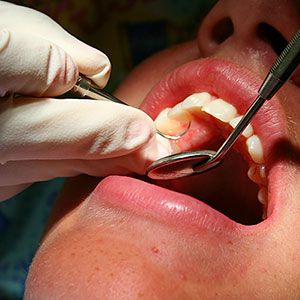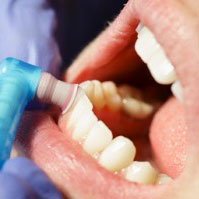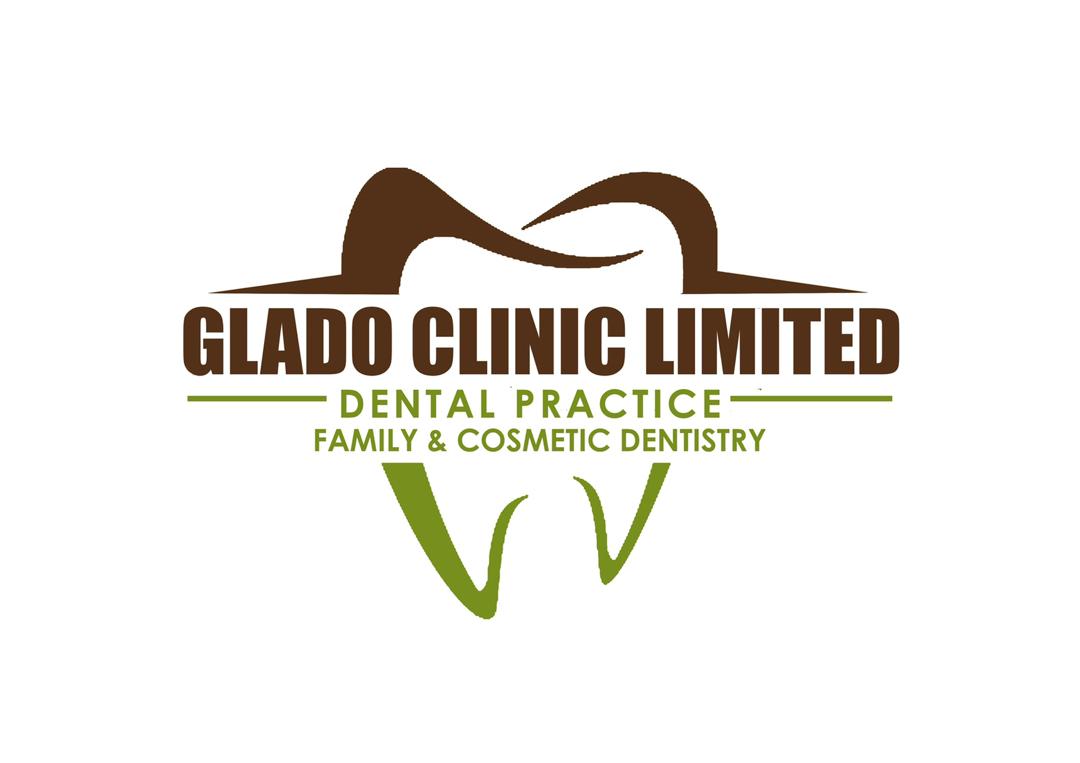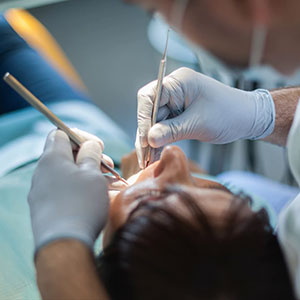Deep cleaning (also known as root planing or scaling) is a procedure that involves removing tartar and plaque from the pocket area between the gums and teeth or the teeth surface. The pocket is typically the depth of the gum tissue between the gums and teeth. A dentist can perform root planning or scaling using manual scaling tools or electronic & ultrasonic instruments.
For root planning, the dental hygienist often uses special scaling instruments to remove tartar and plaque from the roots and surface of the teeth. For the procedure to be complete, the dentist must smooth out the rough spots on the roots to avoid collection of bacteria, which may have contributed to gum disease. This gives the gums a smoother surface to re-attach. Both procedures require a patient to make at least two visits to the dentist. Perhaps the second visit is a follow-up to check if the teeth and gums are getting healthier and that there are no more pockets.
Deep cleaning is recommended when and If your dentist thinks that your oral care is not good enough to manage mild cases of gum-related diseases like gingivitis, a deep cleaning may be recommended as the ultimate therapy. Experts in this field agree that this procedure is the first line of treatment or defense for a more severe form of gum diseases like periodontitis. Putting it in simple terms, deep cleaning helps people avoid more extreme treatments for advanced gum diseases, which would lead to tooth loss if left untreated.
You know that going to the dentist is an essential part of your dental hygiene and health. Nevertheless, did you know that deep cleaning your teeth with your dentist is equally important? Of course, the main objective of this procedure is to remove tartar and plaque from the teeth and pocket area. However, there are many other benefits, which include the following:
- Better oral and gum health
- Whiter teeth for a brighter smile
- It removes bacteria and prevents gum/oral diseases.
The recommended care after teeth deep cleaning is Just like any other dental invasive-sounding procedure, patients may experience tooth sensitivity, soreness, or even bleeding for a couple of days after root planing and scaling. If these side effects continue for an extended period, do not hesitate to see your dentist. Be sure to schedule (and keep!) follow-up appointments so the dentist can monitor the healing process of the gums or depth of periodontal pockets. You should also observe everyday oral hygiene such as brushing teeth twice a day using antimicrobial toothpaste.
Full Mouth Debridement

If you have not been to the dentist in a while, you might need a full mouth debridement procedure to get your teeth completely clean. Without proper daily oral hygiene and regular checkups and cleanings, excessive amounts of plaque and tartar can build up, making it hard to determine if your gum tissue is healthy or not. A full mouth debridement is a super deep cleaning “catch up” session to remove as much of the plaque and tartar as possible, giving your teeth a fresh start to get healthy again. Have you not been to the dentist in a while? Contact Glado Clinic Dental Practice at 0201414498 today to see if your teeth are in need of a dental debridement procedure.
Depending on how much plaque and tartar has built up since your last trip to the dentist, your dental debridement procedure might need to be broken up into two separate sessions at our office. During the first session,the dentist will remove as much of the build-up as possible, giving your gum tissue the chance to begin healing. About 2-3 weeks later, after your gums have healed a little bit and the inflammation has gone down (your gums might be a little sore after the debridement, since they’will be free of plaque and tartar for the first time in a long time!), you will come back for a second appointment, where any remaining plaque or tartar can be removed. The second appointment is also when the dentist will perform a regular dental exam, checking for signs of gum disease or cavities that may need to be filled. Depending on the state of your oral health, you might have to come back for additional appointment, where other periodontal treatments will be performed. Most of the time, a regular teeth cleaning procedure with one of our dental hygienists is more than enough to help keep your teeth clean and healthy, but if it has been a few years since you last sat down in the dentist’s chair, you might need a full mouth debridement procedure to get you back on the right track.
Prophylaxis (Teeth Cleaning)

A dental prophylaxis is a cleaning procedure performed to thoroughly clean the teeth. Prophylaxis is an important dental treatment for halting the progression of periodontal disease and gingivitis. Periodontal disease and gingivitis occur when bacteria from plaque colonize on the gingival (gum) tissue, either above or below the gum line. These bacteria colonies cause serious inflammation and irritation which in turn produce a chronic inflammatory response in the body. As a result, the body begins to systematically destroy gum and bone tissue, making the teeth shift, become unstable, or completely fall out. The pockets between the gums and teeth become deeper and house more bacteria which may travel via the bloodstream and infect other parts of the body. Reasons for prophylaxis/teeth cleaning Prophylaxis is an excellent procedure to help keep the oral cavity in good health and also halt the progression of gum disease.
Here are some of the benefits of prophylaxis:
- Tartar removal – Tartar (calculus) and plaque buildup, both above and below the gum line, can cause serious periodontal problems if left untreated. Even using the best brushing and flossing homecare techniques, it can be impossible to remove debris, bacteria and deposits from gum pockets. The experienced eye of a dentist using specialized dental equipment is needed in order to spot and treat problems such as tartar and plaque buildup.
- Aesthetics – It’s hard to feel confident about a smile marred by yellowing, stained teeth. Prophylaxis can rid the teeth of unsightly stains and return the smile to its former glory.
- Fresher breath – Periodontal disease is often signified by persistent bad breath (halitosis). Bad breath is generally caused by a combination of rotting food particles below the gum line, possible gangrene stemming from gum infection, and periodontal problems. The removal of plaque, calculus and bacteria noticeably improves breath and alleviates irritation.
Since prophylaxis involves a thorough examination of the entire oral cavity, the dentist is able to screen for oral cancer, evaluate the risk of periodontitis and often spot signs of medical problems like diabetes and kidney problems. Recommendations can also be provided for altering the home care regimen.
Prophylaxis can either be performed in the course of a regular dental visit or, if necessary, under general anesthetic. The latter is particularly common where severe periodontal disease is suspected or has been diagnosed by the dentist.
Prophylaxis is recommended twice annually as a preventative measure, but should be performed every 3-4 months on periodontitis sufferers. Though gum disease cannot be completely reversed, prophylaxis is one of the tools the dentist can use to effectively halt its destructive progress.
Contact
Our Address
Adomako Avenue
Queen of Peace Junction, Anaji
(Near Anaji Police Station)
Takoradi Western Region

